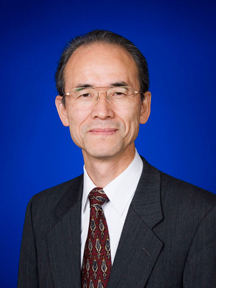Tsutae Shinoda
- Associated organizations
- Fujitsu Laboratories Limited
- Fields of study
- Television
- Awards
- Japan Patent Award, Kerl Ferdinand Braun Prize, Purple Ribbon Medal
Biography
The holder of 59 patents, Tsutae Shinoda has been engaged in the development of monochrome and color plasma display panels (PDPs) since he joined Fujitsu Laboratories Limited, Japan, in 1973. By 1980, many research groups, including Fujitsu, observed a short device life time, and discontinued research into color PDPs. Nevertheless, Dr. Shinoda continued his investigation of the technology. His persistence was rewarded in 1983 when he invented a three-electrode surface-discharge structure that overcame the observed short-life issue.
Dr. Shinoda also invented the Address Display period separation sub-field method for a high-level grayscale display in 1990. With these innovative technologies, he successfully developed the world’s first practical video graphics array PDP in 1992—a 21-inch, diagonal-color PDP with 260 thousand colors—and the first 42-inch in 1995, thereby largely contributing to the current marketplace success of high-definition television.
Dr. Shinoda started his research of plasma display panels after earning admission to his native Japan’s Hiroshima University in 1970, from which he obtained bachelor’s and master’s degrees in electrical engineering. He also received his doctorate in electro-communication engineering from Tohoku University, Sendai, in 2000.
Dr. Shinoda is a Chairman at Shinoda Plasma Co.,Ltd., a General Manager of Engineering at Advanced PDP Development Center Co.Ltd. and also serves as a professor at the Hiroshima University. He received the Japan Patent Award in 2002 from the Prime Minister of Japan, the Kerl Ferdinand Braun Prize from the Society for Information Display in 2003, and the Purple Ribbon Medal in Japan from the Japanese Emperor in 2004.
